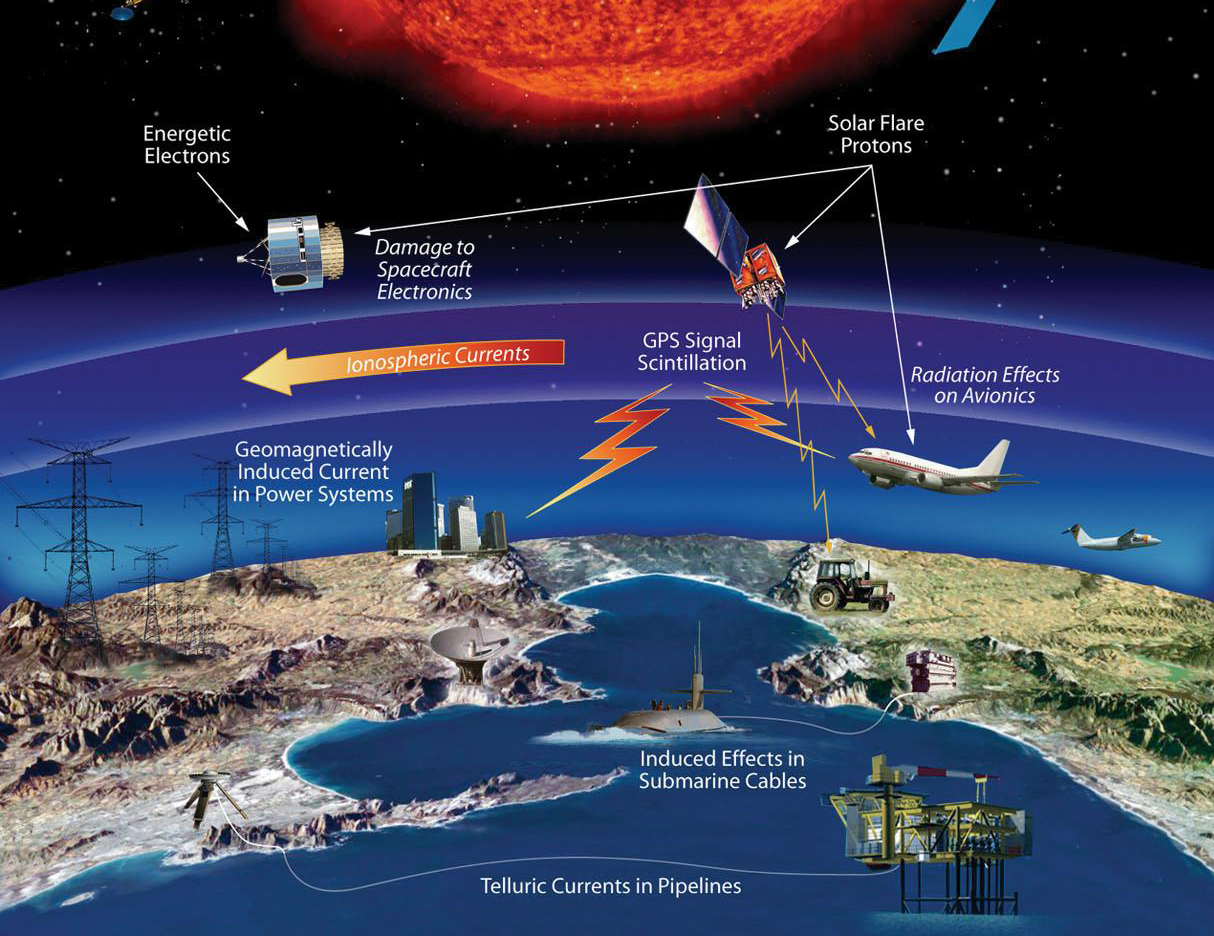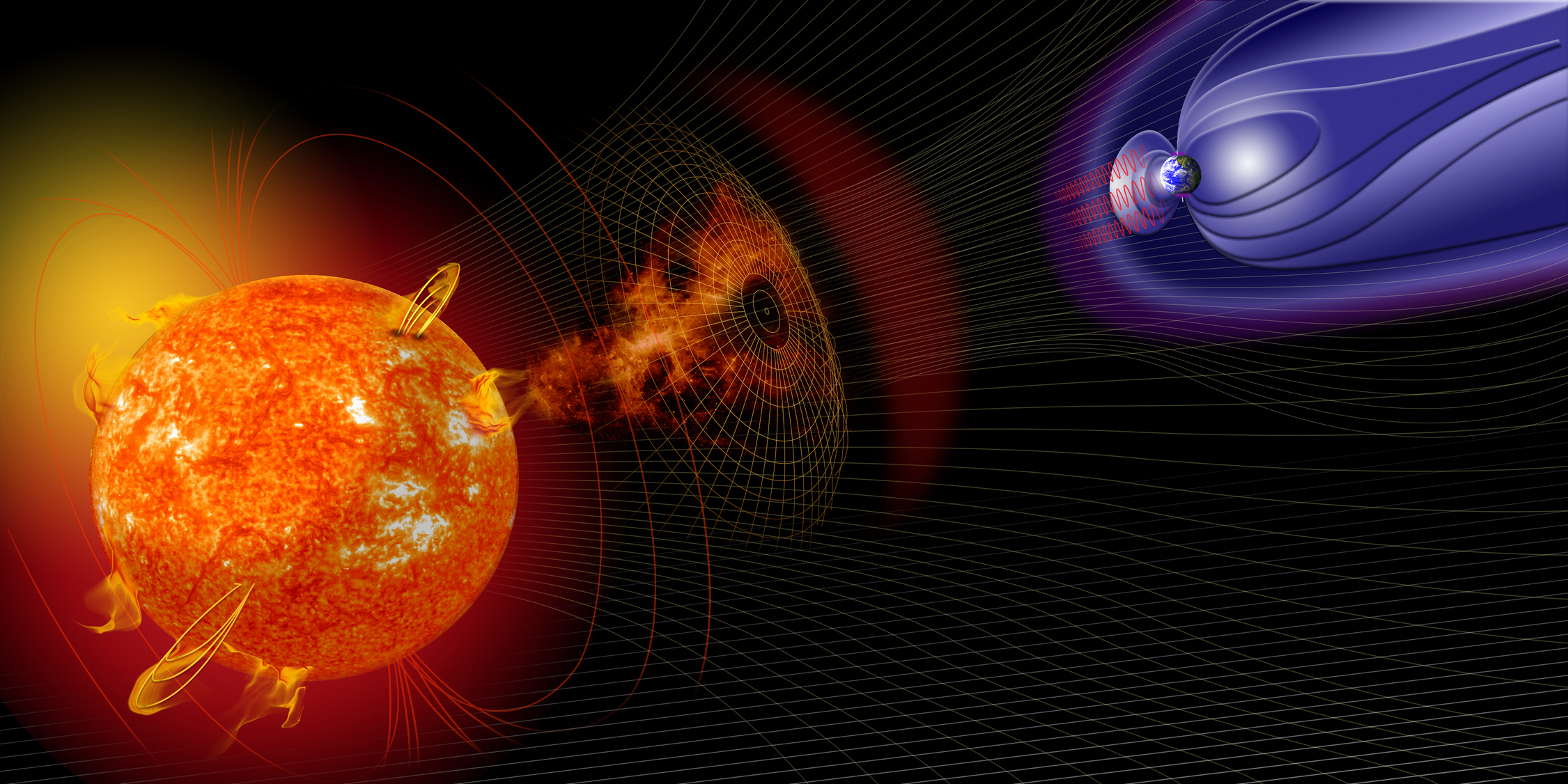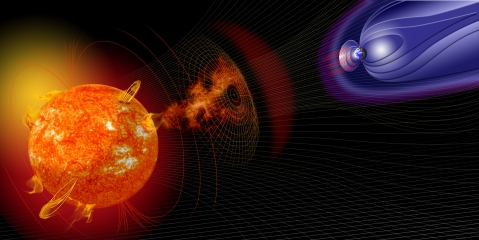As society’s reliance on technological systems grows, so does our vulnerability to space weather. To address this phenomenon, Aerospace is poised to create a center where like-minded heliophysicists can collaborate to make advancements in research studies about the dynamics of space weather.
CASII
The Center for Assessing Space-weather Impacts and Innovation (CASII) will focus on carrying out basic heliophysics research to improve the understanding of different types of space weather events that can result in major impacts to society.
Space weather refers to the dynamic conditions in the Earth’s outer space environment. It includes all events on the sun, in the solar wind, in near-Earth space, and in our upper atmosphere that can affect space-borne and ground-based technological systems. Heliophysics is the study of the Earth-space environment.
Dr. Alexa Halford, member of the technical staff, Space Sciences Department, is part of a small group of heliophysicists who has an interest in creating a larger, more dynamic community.
“We need to better understand the needs of those impacted by space weather,” Halford said. “We need better communication, both within the research community and with people outside of our narrow area of research, and we need to create an environment that enables more effective collaborations and research."
And so, the concept for CASII was born.
Space Weather Events
“Space weather has the potential to disrupt many technologies and infrastructures important to our nation’s security and economic vitality,” Halford said. “The range of potentially affected technologies is diverse and are often portions of a system-of-systems."
Because of our reliance on technology, space weather affects our electricity grids, radio communications, and satellite-based services.
Halford explained that the direct effects of space weather events on our satellite communications are twofold. Satellites are subjected to high radiation doses from the space environment that can cause hardware faults and failures and satellite-transmitted radio signals are manipulated by the layer of partially ionized gas in Earth’s upper atmosphere, the ionosphere.

Two Canadian telecommunications satellites were subjected to an intense geomagnetic disturbance in 1994 and cost about $400 million to replace.
Another well-known example of a space weather event is the 1989 collapse of the Hydro-Quebec power network. This event was caused by a geomagnetic storm that led to a nine-hour blackout that affected more than six million people.
“It’s important to identify and correctly quantify the causes of space weather risks and improve mitigation measures,” Halford said. “It’s critical to understand the dynamic range of space weather events, their extremes, and what types of space weather impact which technologies and the likelihood of their occurrence.”
Space Weather Strategy and Action Plan
The key goal of CASII is to address the science and impacts identified in the National Space Weather Strategy and Action Plan (SWAP). This will be accomplished by bringing together international scientific experts, economists, policy experts, and the user.
“Gaps continue to remain in our capacity to fully understand, model, and predict space weather events, Halford said. “In order to help guide the research communities’ efforts towards improving our knowledge of space weather events, the SWAP was designed,” she said.

The SWAP identifies five areas of space weather to establish benchmarks and to prioritize ongoing research efforts. Those priorities include: induced and geoelectric fields, ionizing radiation, ionosphere disturbances, solar radio bursts, and upper atmospheric expansion.
In June of 2018, the initial phase one benchmarks for these five areas were released and are a first look at the one-in-a-hundred-year event to help produce engineering standards and vulnerability and risk assessments, which can be used to inform mitigation and recovery activities.
Our continued reliance on technological systems creates a vulnerability to space weather that must be addressed. “Research benefits from an international approach,” said Halford. "Sharing resources and intellectual findings allows for quicker advancement to forecasting and identification of targeted science goals,” she said.
Join Our Mailing List


